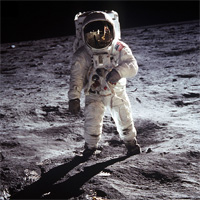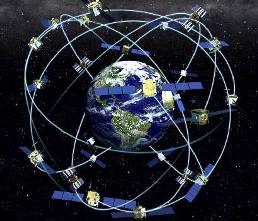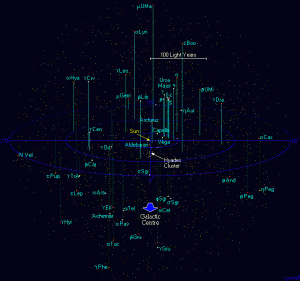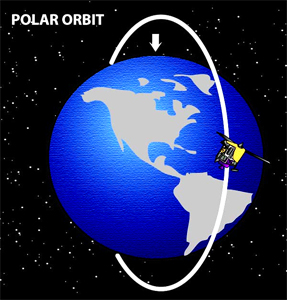The Fermi Paradox is a classic conundrum both in science and in science fiction. After working with others in 1950 to make a back-of-the-napkin estimate of the number of alien civilizations, Enrico Fermi famously asked, “Where is everybody?” That is, if alien civilizations are common, why haven’t we found them?
In the original formulation, it was proposed that an alien civilization could send out a wave of interstellar colonization to nearby worlds, and after 10,000 years, those worlds could send out a second wave of colonization, and so on, 10,000 years at a hop. If an alien civilization had even a million year head start on humanity, then this glacial but exponential rate of expansion would have gone through a hundred generations by now, doubling the inhabited worlds each time, resulting in about 1030 colonies, or more stars than there are in the Milky Way galaxy. So again, where is everybody?
Even if you discount the possibility of interstellar colonization – it just might be a LOT harder than it looks – there’s still the matter of radio transmissions. We’ve been listening for a few decades now. Why haven’t we heard anyone?
There are a lot of possible explanations. I read an excellent book once: Where is Everybody? by Stephen Webb. It put forth fifty possible solutions to the paradox. Some were a bit fanciful, but most went after the notion that the universe is teeming with aliens. In fact, most serious attempts at this go after the difficulty of evolving such a technological civilization. In doing so, they are updating the original values of the variables in the famous Drake equation.
Famous Drake Equation?
Well, it’s famous if you were raised on Carl Sagan’s Cosmos like I was.
The Drake equation is an attempt to estimate the number of technological civilizations in our galaxy at present. It deals with estimates of the number of earth-like planets, the probability of starting life on those planets, of evolving intelligence, and so forth. The final term in the equation is the lifespan of these civilizations. If they last for millions of years, then even rare origins would add up to quite a chorus, but if they tend to die off quickly, then they could all be brief cries against a backdrop of silence.
It’s this last term I want to talk about today. How long do we have? Usually debate around this term looks at possible causes of our doom and ways we might hope to escape to live another day, but a couple of years ago, I ran into a different take on it. It proposed that all independent civilizations will eventually collapse, whether it be through random catastrophe, resource depletion, or more likely simple boredom with life, the universe, and everything. The only escape was through the spark of renewed curiosity that would accompany the discovery of another civilization.
A couple of Ukranian fellows, Bezsudnov and Snarskii, put forth what they called the “bonus stimulation” model. The available white paper is an imperfect English translation, so it’s not the easiest read. Still, if you’re geeky enough, give it a shot. Their basic idea was to look at a system were each civilization got to survive and expand for T0 time, and then it would slowly collapse back in on itself and die. However, if it encountered another civilization before that, it got to expand again for the bonus time Tb. They then set it up as a cellular automata simulation, like the old computer “game of life” some of us remember from the 80’s.
 (From their paper, this shows five civilizations, some expanding and intersecting and some declining towards death.)
(From their paper, this shows five civilizations, some expanding and intersecting and some declining towards death.)
They played around with various parameters, but it really boiled down to three: the frequency of new civilizations, their initial lifespan of T0, and the amount of bonus time (Tb) they got after encountering another civilization. After running different simulations with lots of different values, what they found was that there are only two kinds of universes: those where everyone is alone forever, and those where intelligent civilizations expand and fill the universe. There was essentially no middle ground.
How can that be?
Well, if there aren’t enough civilizations or their lives are too short even with the occasional added bonus, then everything dies out in relative isolation. If we live in a universe like that, then we’ll never find anyone, or at best, we and the Rigellians will party for a bit before going gently into our mutual good nights.
However, if there are enough civilizations and they last long enough then that bonus time starts building on itself. It gives civilizations enough time to find not just that first other but then time to find more, giving them time to find more and more, expanding as they go. It looks a lot like ice crystals forming and spreading as water makes the transition from liquid to solid.
In fact, these Ukrainian researchers likened it a state change in matter. As those parameters (frequency, T0, and Tb) reached a certain threshold, the simulated universes all switched over, just like water dropping down to the freezing point. Once the conditions are right, it just happens.
But what does that mean for us? If their supposition is true, which kind of universe are we in, the lonely hearts club or the one where we get by with a little help from our friends? Unfortunately, we can’t tell… yet. That’s just it. It’s too early to tell.
On the face of it, there are three possibilities, all of which would look the same to us today.
1. We’re doomed to be the lonely hearts. There simply isn’t anyone else close enough to help us continue forward. We can enjoy the ride while it lasts, but eventually that ten thousandth generation will fail us, and Shakespeare will be gone forever.
2. There are enough civilizations out there that it’s eventually going to be one hell of a party, but we got here too early. The ever-expanding wave of universal (or at least galactic) civilization will come across our ruins and mourn us. They might be able to salvage Shakespeare, but they’ll never be able to hear it in the original Klingon.
3. Again, it’s going to be one hell of a party, but we’re still on our way there. We’ll meet up with some friends along the way, and by the time we get there, we’ll be doing Rigellian reinterpretations of Romeo and Juliet with Carnuth tossed in to make it understandable to those races with three genders.
I am certainly hoping for that third possibility, but there’s no evidence pointing to it.. There’s also not much I can do except promote science and the notion of expansion and survival. Other than that, there’s not much more we can do but hope.
Or can we game the system somehow?
I read this white paper shortly after it was published, and I’ve been mulling it over in my head ever since. If you found your civilization was on the decline, and you were still alone, what could you do? It might be too late to save yourselves, but could you still find some way to affect the final results?
Maybe you could. One way that comes to mind is spread evidence of yourself. If your society has become too bored to continue – as one woman said, “If I have to watch Tosca one more time, I will throw myself into the orchestra pit!” – you might be able to rely on technology to press on for you.
Send out a fleet of self-replicating Von Neumann probes. Make them smart enough to keep at it, but not so smart that you’re launching Saberhagen’s fleet of Berserkers. Have them leave markers behind. Put them in interesting places. Build them to last. They don’t have to do much beyond announcing their alien origin. It might not give as much bonus time as a live encounter with interactive aliens, but it would be something.
If your probes are flexible enough, try having them seed the occasional world with some simple life forms. They don’t have to hover around prodding life towards intelligence and civilization. Just get some simple DNA going or retrieve samples and push them from catalytic feedback systems into fully-blown single-cell organisms. Most of them won’t go anywhere, but a few of those seeds would take root. It might not be much, but it could increase the frequency of civilizations cropping up.
With efforts like that, you just might be able to nudge the parameters of the universe from the lonely hearts club into the phase change of the big party. You’ll never make it yourself, but that shouldn’t stop you from sending out the invitations.
There’s probably a good story in there. Maybe it’s the role we humans are destined to play as our own civlization winds down thousands of years from now.
Or maybe… maybe it’s already happened, and we just haven’t found our invitation yet.

 The space race, from Mercury through Apollo, made science cool. It wasn’t all white-coats, beakers, and blackboards. It was fiery rockets going to fantastic places. It was making maps and looking over the horizon. Fill up that extra oxygen tank, Sparky, because we’re heading out in the morning!
The space race, from Mercury through Apollo, made science cool. It wasn’t all white-coats, beakers, and blackboards. It was fiery rockets going to fantastic places. It was making maps and looking over the horizon. Fill up that extra oxygen tank, Sparky, because we’re heading out in the morning! I was born in 1967, and while I don’t remember it, I’m told I was on my daddy’s knee when Neil Armstrong took that one small step. My older brother remembers more of the space race, but I still grew up knowing that men were going up to the moon and doing stuff there.
I was born in 1967, and while I don’t remember it, I’m told I was on my daddy’s knee when Neil Armstrong took that one small step. My older brother remembers more of the space race, but I still grew up knowing that men were going up to the moon and doing stuff there.
 Yet I haven’t heard a single proposal about inspiration. No one is talking about lighting that fire to make kids want to explore science in the first place. That’s not a decision we make when graduating high school. It’s not even a decision we make when we’re going into high school. I think that decision is made somewhere deep inside when we’re seven or eight years old. It lights a fuse inside, and it keeps us going until we’re blowing up chemistry labs and crashing mom’s computer.
Yet I haven’t heard a single proposal about inspiration. No one is talking about lighting that fire to make kids want to explore science in the first place. That’s not a decision we make when graduating high school. It’s not even a decision we make when we’re going into high school. I think that decision is made somewhere deep inside when we’re seven or eight years old. It lights a fuse inside, and it keeps us going until we’re blowing up chemistry labs and crashing mom’s computer.







 (From their paper, this shows five civilizations, some expanding and intersecting and some declining towards death.)
(From their paper, this shows five civilizations, some expanding and intersecting and some declining towards death.)